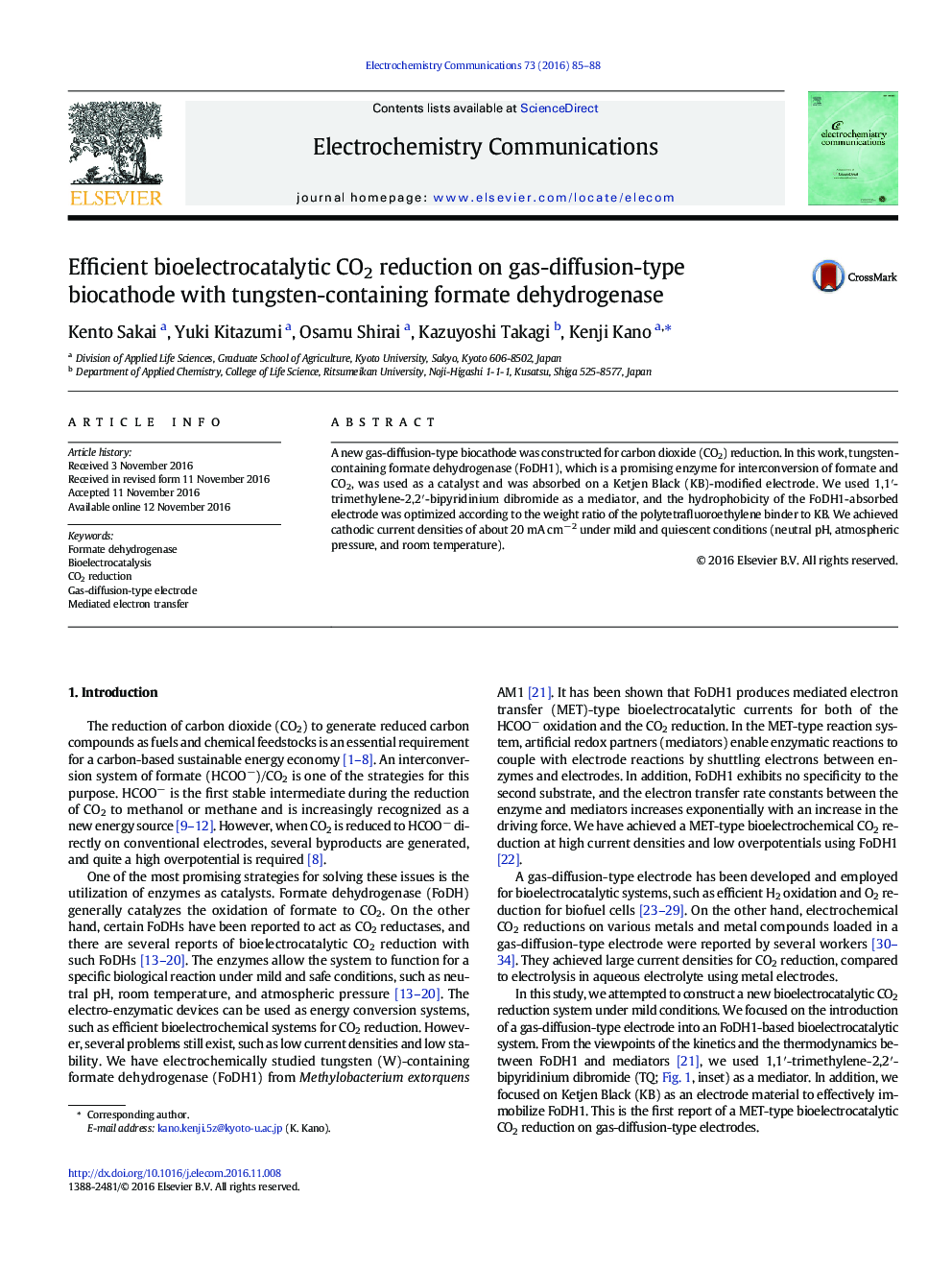| کد مقاله | کد نشریه | سال انتشار | مقاله انگلیسی | نسخه تمام متن |
|---|---|---|---|---|
| 6469773 | 1423984 | 2016 | 4 صفحه PDF | دانلود رایگان |

- Gas diffusion-type electrodes for bioelectrocatalytic CO2 reduction were constructed.
- 1,1â²-Trimethylene-2,2â²-bipyridinium dibromide work as a good mediator for FoDH1.
- The current density of CO2 reached about 20 mA cmâ 2.
- Highly efficient platforms for MET-type bioelectrocatalysis of FoDH1was optimized.
A new gas-diffusion-type biocathode was constructed for carbon dioxide (CO2) reduction. In this work, tungsten-containing formate dehydrogenase (FoDH1), which is a promising enzyme for interconversion of formate and CO2, was used as a catalyst and was absorbed on a Ketjen Black (KB)-modified electrode. We used 1,1â²-trimethylene-2,2â²-bipyridinium dibromide as a mediator, and the hydrophobicity of the FoDH1-absorbed electrode was optimized according to the weight ratio of the polytetrafluoroethylene binder to KB. We achieved cathodic current densities of about 20 mA cmâ 2 under mild and quiescent conditions (neutral pH, atmospheric pressure, and room temperature).
Journal: Electrochemistry Communications - Volume 73, December 2016, Pages 85-88